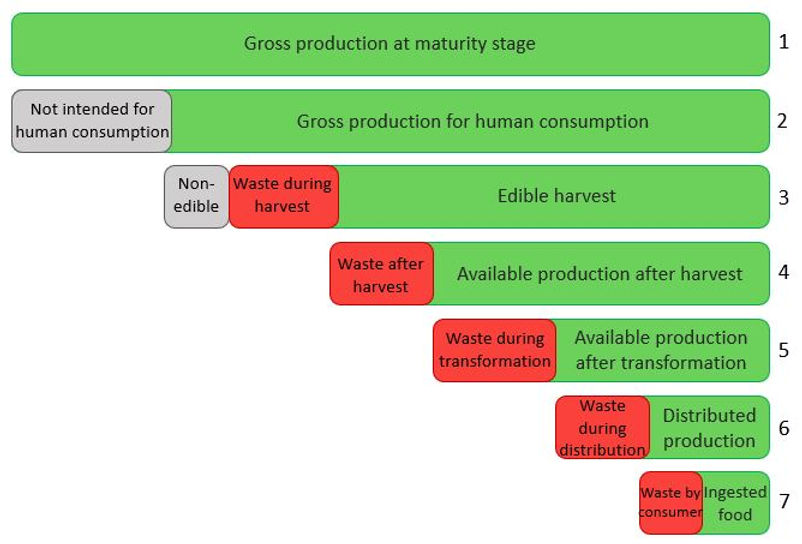
Food waste - From producer to consumer
15/11/2021
Food waste is one of the major problems facing developed countries. Worldwide, 2.5 billion tonnes of food are lost each year, which represents about 40% of the food produced.
This waste causes significant greenhouse gas emissions, as well as economic losses for producers and distributors. The latest data collected by WWF shows that global food waste contributes to 10% of global greenhouse gas emissions. This is equivalent to nearly twice the annual emissions produced by all the cars driven in the US and Europe.
The problem is global, but what about the situation in France?
In France, 10 million tonnes of food are wasted, i.e. 20% of food produced but not consumed (these data do not take into account losses concerning products exported or imported into the country). This represents 16 billion euros and 3% of the greenhouse gas emissions of the national activity. Waste is present at all stages of the food chain, from producer to consumer.
The latest report presented by ADEME (Agence de l'Environnement et de la Maîtrise de l'Ecologie), qualifies and quantifies food losses and waste throughout the production and consumption chain.
Thus, 5 stages of the food chain are concerned by waste and are summarised below:

What about the distribution of losses in the different stages?

Production:
At the production stage, the main causes of food losses are mechanisation, sorting (appearance, shape, size), sanitary problems, preservation/storage, overproduction and the lack of circuits for the valorisation of losses. It is important to note that the figure above shows the distribution of losses and waste by weight. The reason why losses (by weight) are relatively high among producers is that the weights involved are higher, since raw products often require processing even if the product is edible and intended for human consumption (i.e. wheat grain).
Processing:
During processing, losses are due to sorting (technical and aesthetic), storage, and the recipes used.
Distribution:
At the stage of distribution, the sales forecasts (too high forecast compared to actual purchases), the management of shelves and the lack of circuits for valorising losses (out-of-date food, unsold food) are responsible for food waste.
Consumption:
Two aspects of consumption should be considered: home consumption and collective and commercial catering.
For home consumption, poor preservation of products and leftover plates or dishes are sources of waste. In the catering sector, inadequate sales forecasts and unsuitable portions are involved.
Which solutions?
In order to reduce food waste, it is necessary that all actors, from producers to consumers, make efforts. Individual efforts by consumers are of course necessary, but changes in production, processing and distribution processes are compulsory. Some of the issues mentioned above can be targeted, such as overproduction, sorting food according to a certain standard or sales forecasts. Producing less, or producing according to the real needs of the population, would be more suitable for sustainable food production and consumption. Avoiding the sizing of products such as fruit and vegetables would allow more of the harvest to be sold, and thus less to be thrown away at the beginning of the food chain. Waste recovery (composting, biofuels, vegetal leathers...) could be a plus so that losses are no longer losses, and are integrated into a circular production process.
In this article ,
we try to investigate the situation in Brittany, France, and try to find applicable solutions at a local scale.
Resources:
[1] https://updates.panda.org/driven-to-waste-report
[2] https://agriculture.gouv.fr/lutte-contre-le-gaspillage-alimentaire-les-lois-francaises
[3] INCOME Consulting - AK2C - 2016 - Pertes et gaspillages alimentaires : l’état des lieux et leur gestion par étapes de la chaîne alimentaire – Synthèse - 16p.
